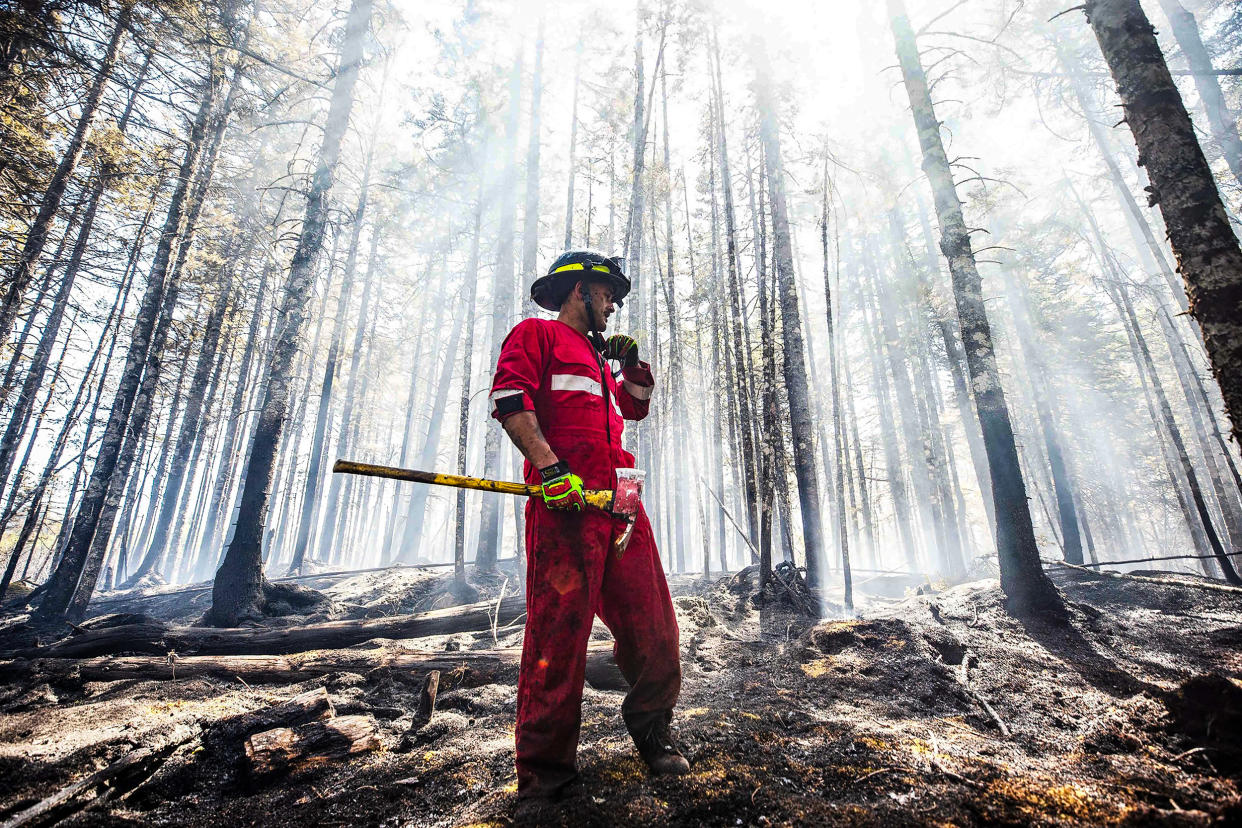Air quality levels in parts of the U.S. plunge as Canada wildfires rage
Millions of people across the Midwest are under dangerous air quality conditions Monday, as smoke from wildfires in eastern Canada wafts over the region.
Hazy skies have blanketed a wide swath of the country from the Ohio Valley to as far south as the Carolinas. Air quality advisories are in effect Monday in southeastern Minnesota and parts of the Upper Peninsula of Michigan, as well as in more than 60 counties in Wisconsin.
The spike in air pollution comes from wildfires that have been raging in the Canadian provinces of Quebec and Nova Scotia.
“A band of smoke from wildfires in Quebec will continue to linger across east central and southeast Minnesota today due to very light winds,” the Minnesota Pollution Control Agency tweeted Monday, adding that air quality should improve in the evening as thunderstorms help disperse smoke particles from the air.
Canada is experiencing one of the worst starts to its wildfire season ever recorded. More than 6.7 million acres in the country have already burned in 2023, federal officials said last week.
In Quebec, around 14,000 people were forced to evacuate, and more than 150 fires are still ablaze in the province, according to CBC News. Further east, in Nova Scotia, officials said Sunday that one wildfire had been contained but a second, covering nearly 100 square miles, was still burning out of control, The Associated Press reported.

In recent days, smoke from the fires has been drifting over the northeastern United States and settling across the Midwest. Alerts warning of elevated concentrations of air pollution were issued across the regions particularly for “sensitive groups” that include children, older adults, and people with asthma and other pre-existing respiratory conditions.
Air pollution from wildfire smoke has become a significant health risk in the U.S. and is growing worse. Stanford University researchers found that the number of people who experienced at least one day with unhealthy air quality because of smoke rose by 27 times over the last decade.
Small particles in smoke that are less than 2.5 micrometers in diameter — about 4% of the diameter of an average human hair — are of particular concern to air quality researchers.
“These are the particles that are small enough to breathe in and can cause cardiovascular issues,” said Brett Palm, a scientist at the National Center for Atmospheric Research in Boulder, Colorado.
Exposure to this kind of pollution can cause inflammation and weaken the immune system, particularly when the tiny particles penetrate the lungs and enter the bloodstream. Particulate pollution may increase risk of asthma, lung cancer or other chronic lung diseases, particularly in vulnerable groups like older people, pregnant people, infants and children.
Wildfire smoke exposure might increase the risk of respiratory disease. Increases of Covid-19 and influenza have also been linked to wildfire smoke.
Palm said the situation unfolding in the Midwest highlights the longer-term risks of wildfires, particularly as climate change creates warmer and drier conditions that make these blazes more likely to occur — and more severe when they do.
“Over the last decade or so, these fires have been increasing and are having increasing impacts not just where the fires are, but far downwind from there,” he said.
The U.S. Environmental Protection Agency — along with partner agencies such as the National Oceanic and Atmospheric Administration and NASA — maintains an interactive map of air quality data called AirNow that allows users to see the locations of active fires and assess local conditions and risks.
